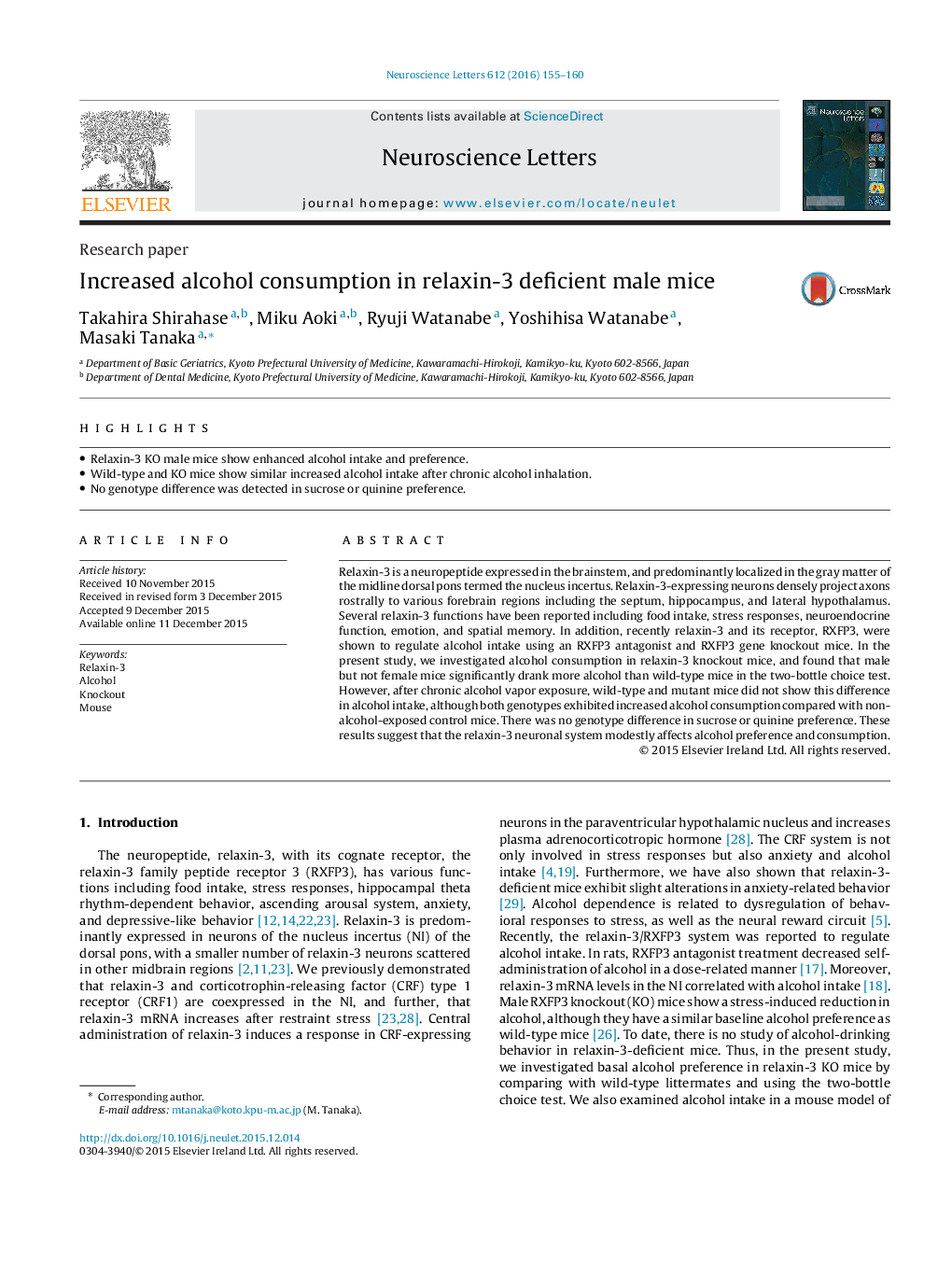| Article ID | Journal | Published Year | Pages | File Type |
|---|---|---|---|---|
| 6280075 | Neuroscience Letters | 2016 | 6 Pages |
â¢Relaxin-3 KO male mice show enhanced alcohol intake and preference.â¢Wild-type and KO mice show similar increased alcohol intake after chronic alcohol inhalation.â¢No genotype difference was detected in sucrose or quinine preference.
Relaxin-3 is a neuropeptide expressed in the brainstem, and predominantly localized in the gray matter of the midline dorsal pons termed the nucleus incertus. Relaxin-3-expressing neurons densely project axons rostrally to various forebrain regions including the septum, hippocampus, and lateral hypothalamus. Several relaxin-3 functions have been reported including food intake, stress responses, neuroendocrine function, emotion, and spatial memory. In addition, recently relaxin-3 and its receptor, RXFP3, were shown to regulate alcohol intake using an RXFP3 antagonist and RXFP3 gene knockout mice. In the present study, we investigated alcohol consumption in relaxin-3 knockout mice, and found that male but not female mice significantly drank more alcohol than wild-type mice in the two-bottle choice test. However, after chronic alcohol vapor exposure, wild-type and mutant mice did not show this difference in alcohol intake, although both genotypes exhibited increased alcohol consumption compared with non-alcohol-exposed control mice. There was no genotype difference in sucrose or quinine preference. These results suggest that the relaxin-3 neuronal system modestly affects alcohol preference and consumption.
